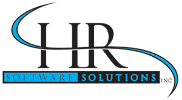In a recent article for Restaurant News, foodservice conference speaker Jim Sullivan said that this industry has a “retention problem” instead of a turnover problem with employees. Although companies in that industry saw turnover rates higher than 90 percent last year, Sullivan advocates a strategy for employee management that focuses on the amount of time that a person stays in their position as opposed to the number of employees that depart during a particular period.
While his advice pertains to industry problems, it could also influence the tactics used by HR departments at other companies to improve the average time an employee spends in their job. In addition to strong communication among different workers and analysis of the most stressful jobs at the company, Sullivan says that there should be a set timeline in place for “milestones” like incentives and performance reviews after a new person is hired.
By specifically planning out the first 100 days of tenure, Sullivan writes, businesses could save money and make better use of their time.
“Defining these onboarding milestones helps sustain enthusiasm, re-recruit your team members and maximize retention,” he writes. “Once you have a 100-day plan in place, create a 10-year development plan with periodic training, recognition and rewards aligned to each person’s potential career path.”
An effort to improve employee retention periods can begin before the new recruits are even hired, with managers and HR staff already clear on the performance metrics that should be prioritized for the worker’s sake.
With the help of an HR software implementation strategy, using data from different sources to increase engagement will be easier and match the specific environment of a business. Consultants can recommend the systems that will fulfill expectations and provide documentation for the customized solution.

